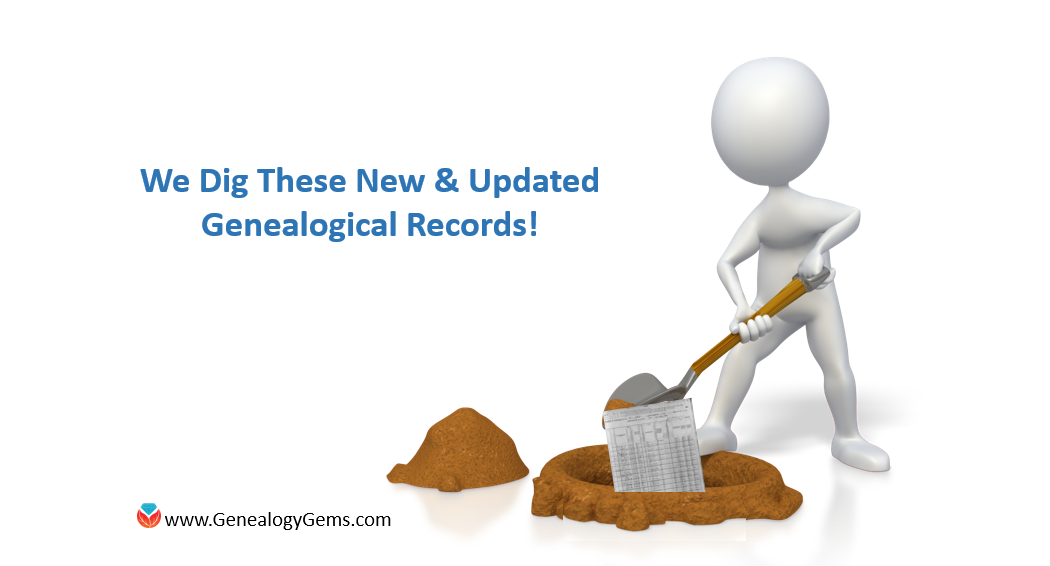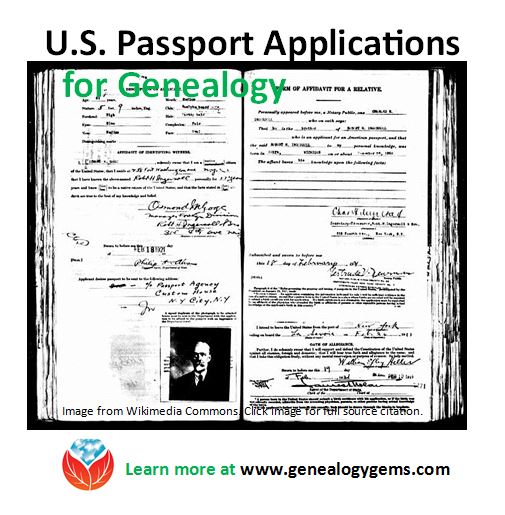We Dig These Gems! New Genealogy Records Online
 Here’s our weekly roundup of new genealogy records online. Do you see anything you should be searching for your ancestors?
Here’s our weekly roundup of new genealogy records online. Do you see anything you should be searching for your ancestors?
Featured: U.S. – SOUTH DAKOTA CENSUS. The 1945 South Dakota state census collection at Ancestry.com has been updated. According to a FamilySearch.org collection description (where it can also be searched for free), “This 1945 South Dakota State Census is an every-name list of the state’s inhabitants as of 1945. The records are handwritten on printed cards and are arranged alphabetically by surname. People enumerated in the census are recorded individually; the census records do not show individuals in family groups.” It’s wonderful to see census records access pushing past that 1940 blackout!
AUSTRALIA VITAL RECORDS. Findmypast.com has updated collections of birth, marriage and death records for Western Australia. Transcripts for all three record sets appear to be taken from original civil registrations, which began in 1841.
SPAIN MUNICIPAL RECORDS. A free collection of Cádiz municipal records (1784-1956) has been updated with over 155,000 new browsable images at FamilySearch.org. The full collection (some of which is indexed) includes “civil registration records, censuses, military records, and other miscellaneous records microfilmed and digitized at municipal archives in the province of Cádiz, Spain.”
U.S. – LOUISIANA WILLS/PROBATE. Ancestry.com’s collection of wills and estate records for Louisiana (1756-1984) has been updated. Indexed images represent nearly 3/4 of Louisiana parishes.
U.S. – NEW YORK CHURCH. Findmypast.com has updated its collection of New York State Religious Records, 1716-1914. Find indexed images of baptisms, marriages and deaths from dozens of churches from various denominations. You can even search by denomination, church name, county or full text.
U.S. – NORTH CAROLINA MARRIAGES. There’s a new index with over 53,000 entries from North Carolina civil marriage bonds and certificates (1763-1868) at FamilySearch.org. Click here to see a description of the index’s coverage.
U.S. – NORTH DAKOTA FUNERALS. An index to records from North Dakota funeral homes hosted by the Red River Genealogical Society is newly indexed at Ancestry.com and can be searched for free. (Click here to search the index on the host website.)
More Genealogy Record Gems
U.S. State Census Records: Capture Your Family History Between Federal Censuses
3 Strategies for Finding Catholic Church Records
U.S. Passport Applications: Finding Immigrant and Traveling Ancestors
